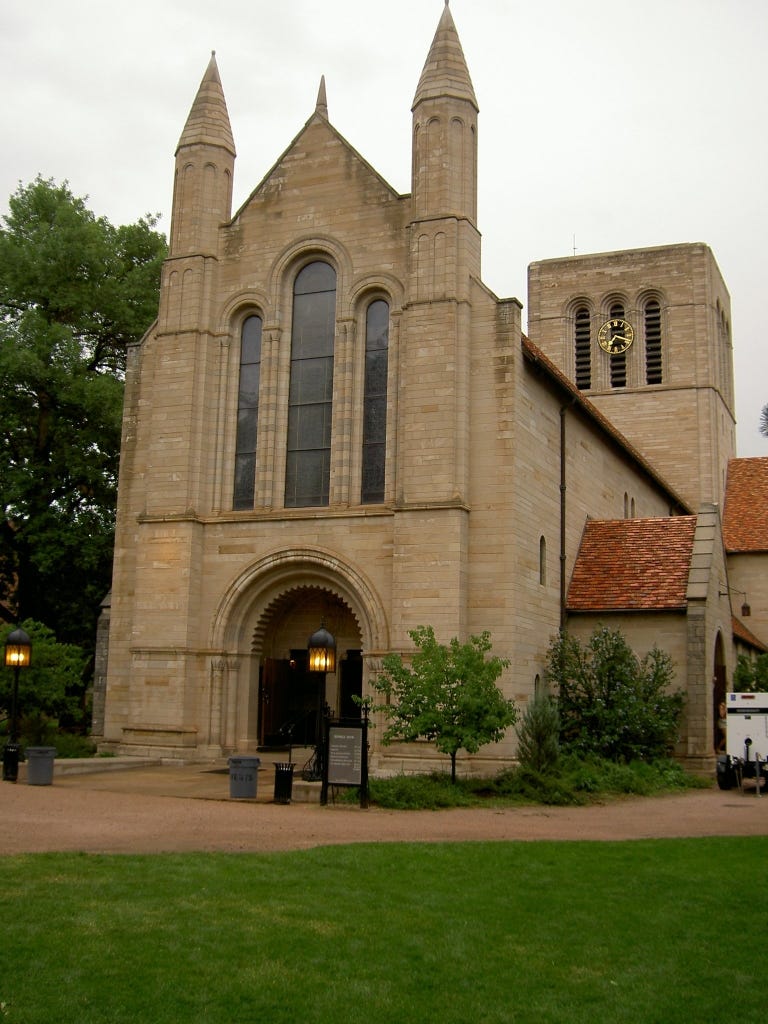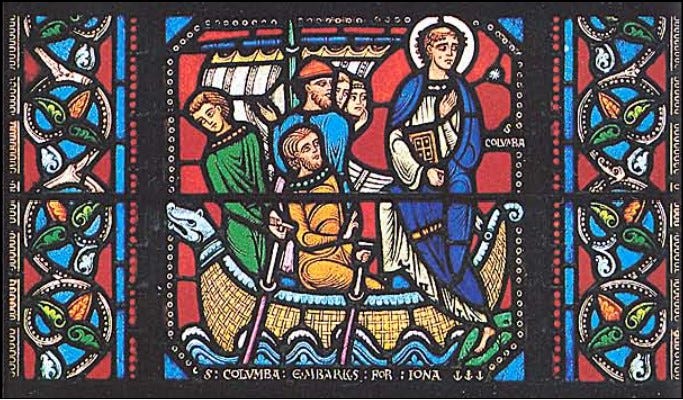Shove Memorial Chapel
✟ Christian (Nondenominational) | Colorado Springs, CO

Situated on the campus of Colorado College, Shove Memorial Chapel is considered the finest examples of Norman Romanesque architecture in the state. It was commissioned and funded by Eugene Percy Shove, a Colorado Springs businessman who served as vice president and later a trustee of the college. Of New York Puritan and Quaker descent, Shove wanted to honor his clergymen ancestors both English and American, and the chapel’s design was inspired by Winchester Cathedral, where one of his ancestors was ordained in 1600.
After a national architectural competition, Shove and his colleagues selected a Pueblo architect, John Gray, to design the chapel. Gray was born in Scotland, was actually married in Winchester Cathedral, trained in Chicago, and moved to Colorado for health reasons. Before this, he had designed only small residences. Shove Memorial Chapel was his first major building project, yet it is regarded as his most important work, the fullest expression of his talents. Gray well understood how physical space can inspire religious contemplation, directing one’s mind and spirit upward to the divine. He wrote at the time that while a church’s exterior should be impressive, the interior was “the most important part of the structure and properly should receive first consideration.” He wanted the chapel’s design to “recreate that elusive sense of mystery and the devotional atmosphere of the ancient cathedrals.”
Construction was completed and the chapel dedicated in 1931. The exterior is of Indiana limestone, similar to Denver’s Cathedral Basilica. The interior is laid out in the cruciform plan of medieval churches, with the main entrance on the west, a long nave, north and south transepts, and a chancel on the east. The tympanum above the entrance contains a sculpture described by Colorado College professor Timothy Fuller as follows:
[It is] a representation, in carved stone, of Christ enthroned in majesty, surrounded by an aureole, emblematic of light and sanctity, and decorated by winged symbols of the four evangelists. The right hand of the Christ figure is raised in the attitude of benediction. The left hand holds the open gospel book in which, in Greek letters, is inscribed, “I am the truth.”
The north and south aisles of the nave contain ten stained glass windows recounting the early history of Christianity in Britain, featuring St. Columba, St. Patrick, the Venerable Bede, and others. The chancel holds a 40,000-pound pipe organ built by the Welte-Tripp division of the Kimball Organ Company. Of its 3,065 pipes, the smallest is a half-inch in length and weighs less than an ounce, and the largest is 300 pounds and sixteen feet high.
Colorado College was founded in 1874 with the support of the Congregational Church, with the stated purpose of being “a college in which liberal studies may be pursued under Christian influences.” To that end, Shove Memorial Chapel initially hosted weekly religious services, with student attendance required. While the college has long since drifted from any sense of religious mission, the chapel, saturated with Christian symbolism, remains essentially unchanged. It stands today as a living embodiment of, and an enduring testament to, the Gospel.
Sources: Colorado College | NRHP Reg. Form (2005) | Timothy Fuller, “This Glorious and Transcendent Place” (1981)
Tour date: March 19, 2024.
» Part of the “Holy Places” series at Blessings of Liberty «



